Abstract
This study is an attempt to investigate the role of the neural arches in transmission of weight in the lower thoracic and the lumbar regions of the vertebral column. Based on simple mechanical principles of weight transmission, various parameters were chosen for measurements at each vertebral level. In 44 adult male dry vertebral columns measurements were made from T5 to L5 levels. The area of the inferior surface of the body at each vertebral level was compared with the area of the inferior articular facet, the cross sectional area of the laminae (lamina index), the pedicle index and the arch index. The inclination of the pedicles in relation to the body was also measured at each level. On the basis of the above measurements it was deduced that the compression force in the lower thoracic and lumbar regions is transmitted through two parallel columns, one anterior (formed by bodies and intervertebral discs) and one posterior (formed by successive articulations of laminae with each other at their articular facets). This study suggests that a considerable part of the weight of the upper limbs and the thoracic cage is transmitted through the ribs to the posterior column (laminae) through the costo-transverse articulations and ligaments. Because of the inclined position of the fifth lumbar vertebra, a significant part of the compressive force from the body is transmitted to the laminae in spite of the anterior inclination of the pedicles at this level. Because of the anterior concavity of the spine in the thoracic region, weight is transferred from the posterior to the anterior column through the inclined pedicles and in the lumbar region, where the concavity is posterior, a part of the compressive force of the anterior column is transmitted to the posterior. Thus, the compressive force in the curvilinear thoracolumbar column tends to deviate towards the line of gravity. The implications of these findings in relation to clinico-pathological disorders of the spine are discussed.
Full text
PDF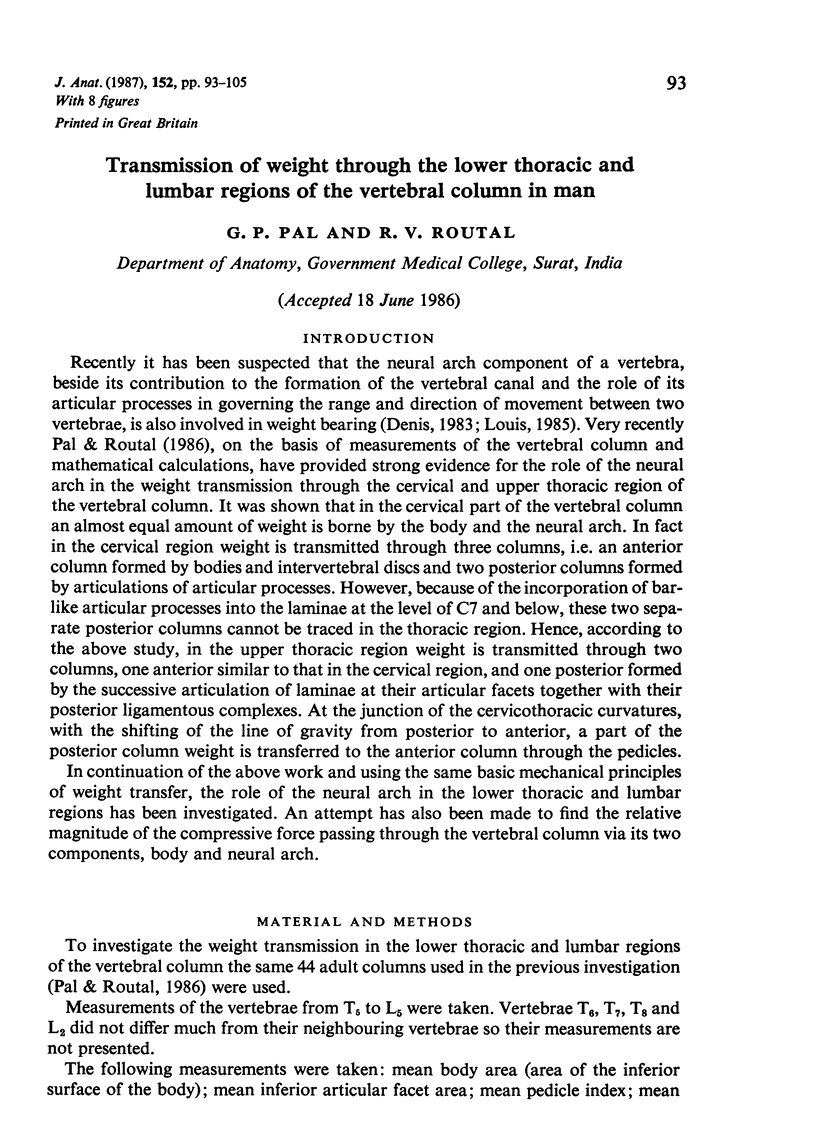
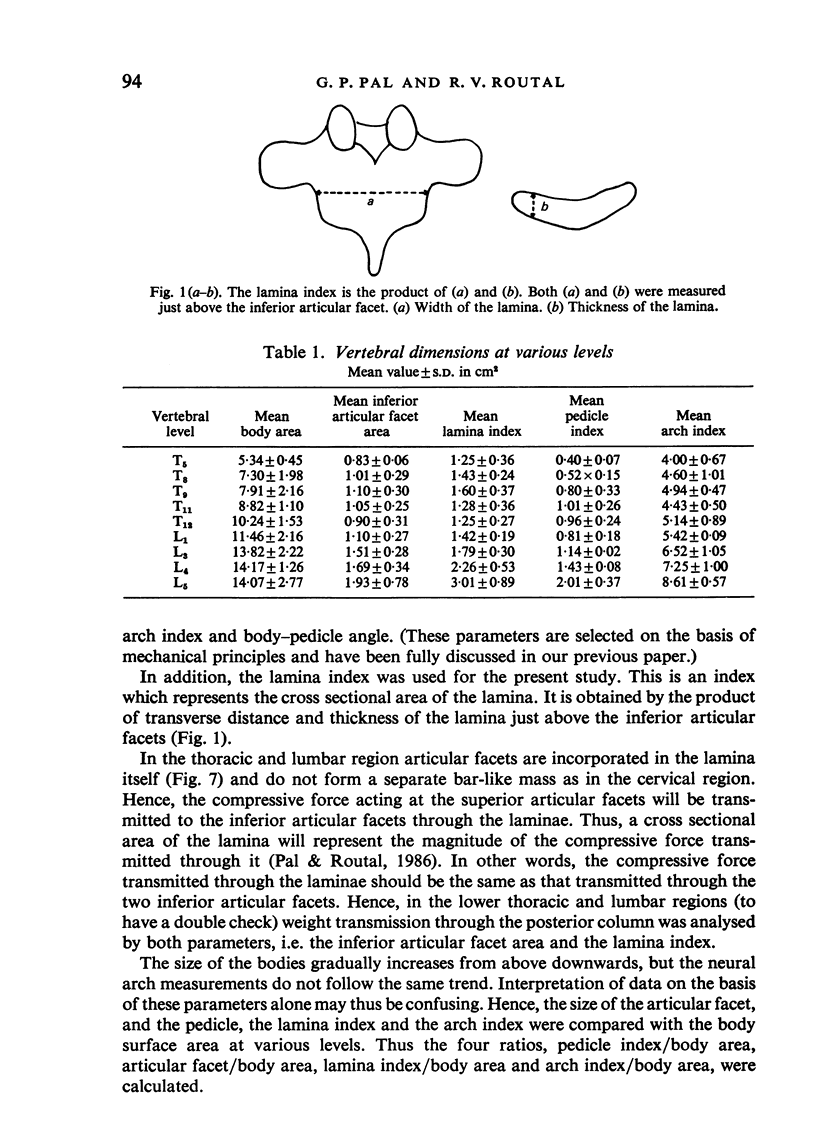
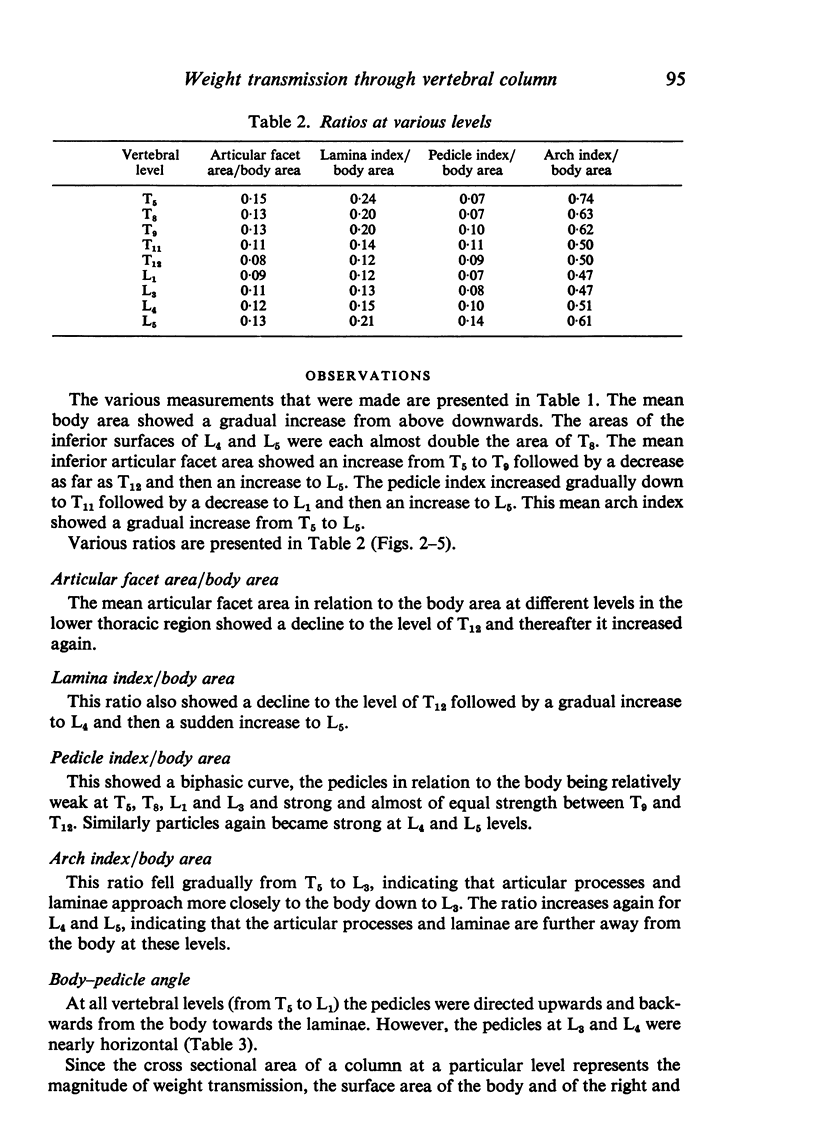
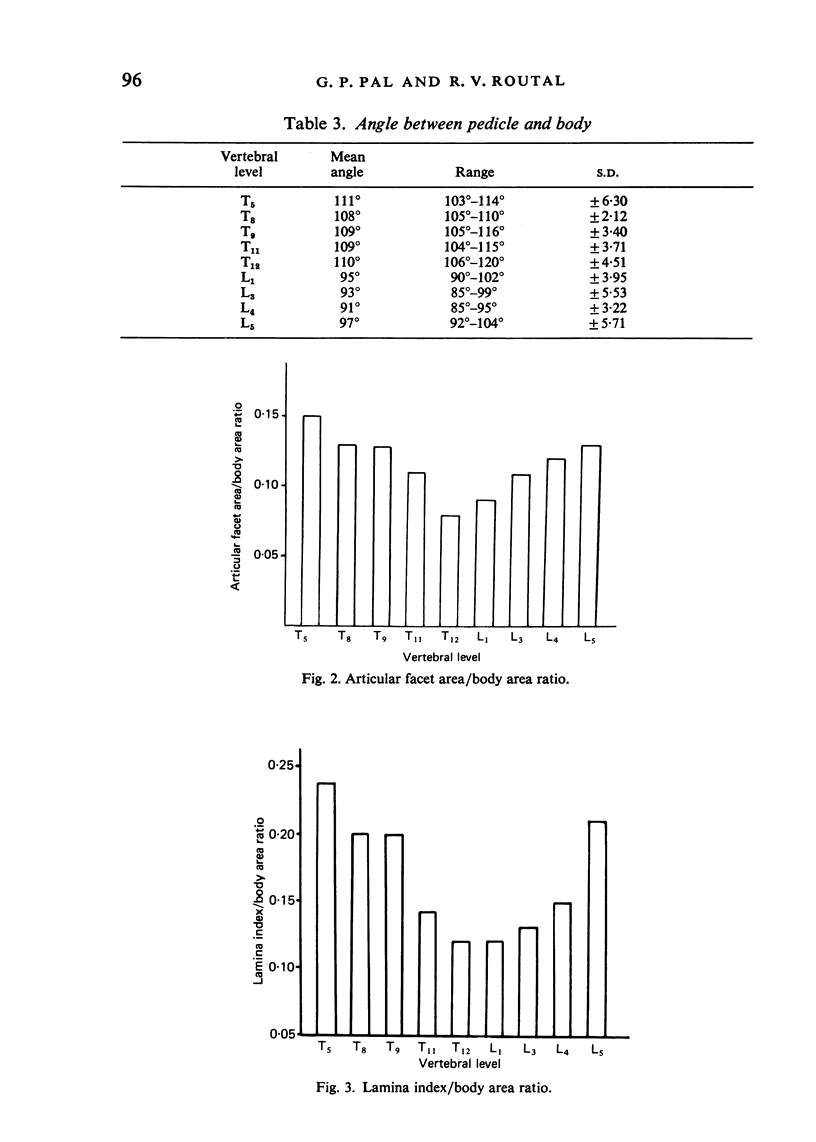

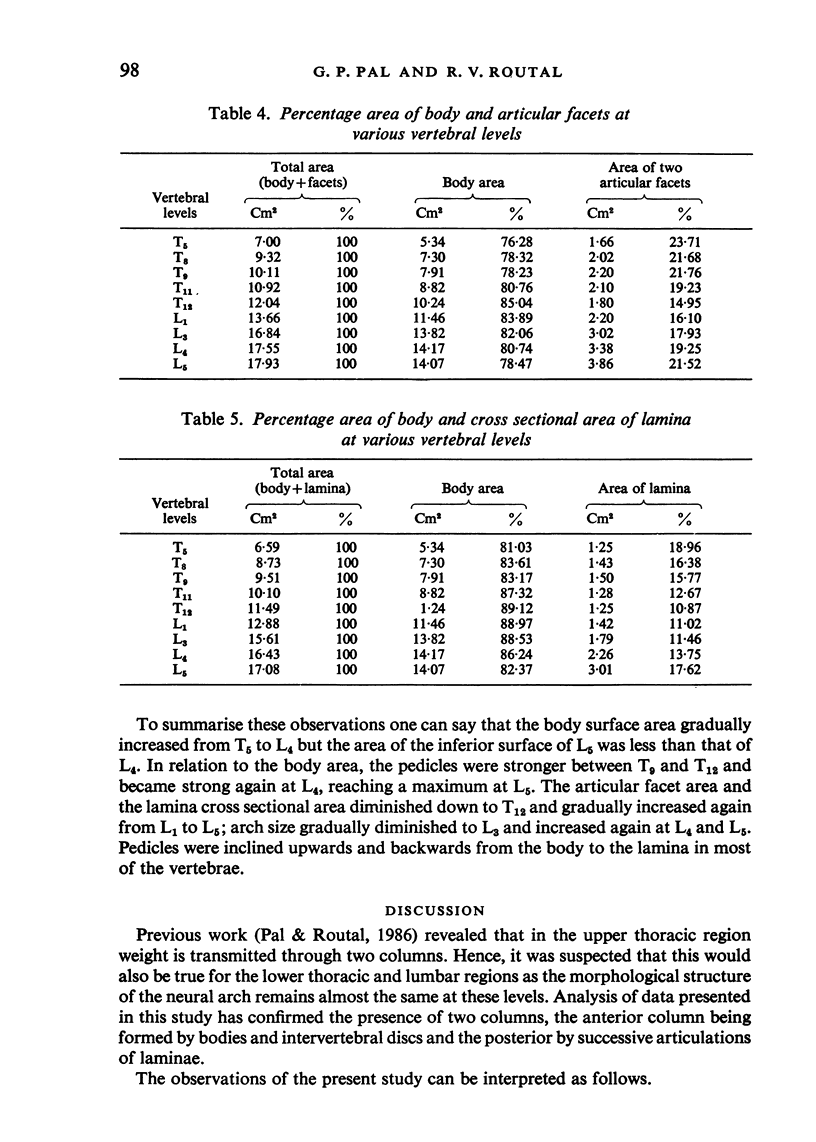
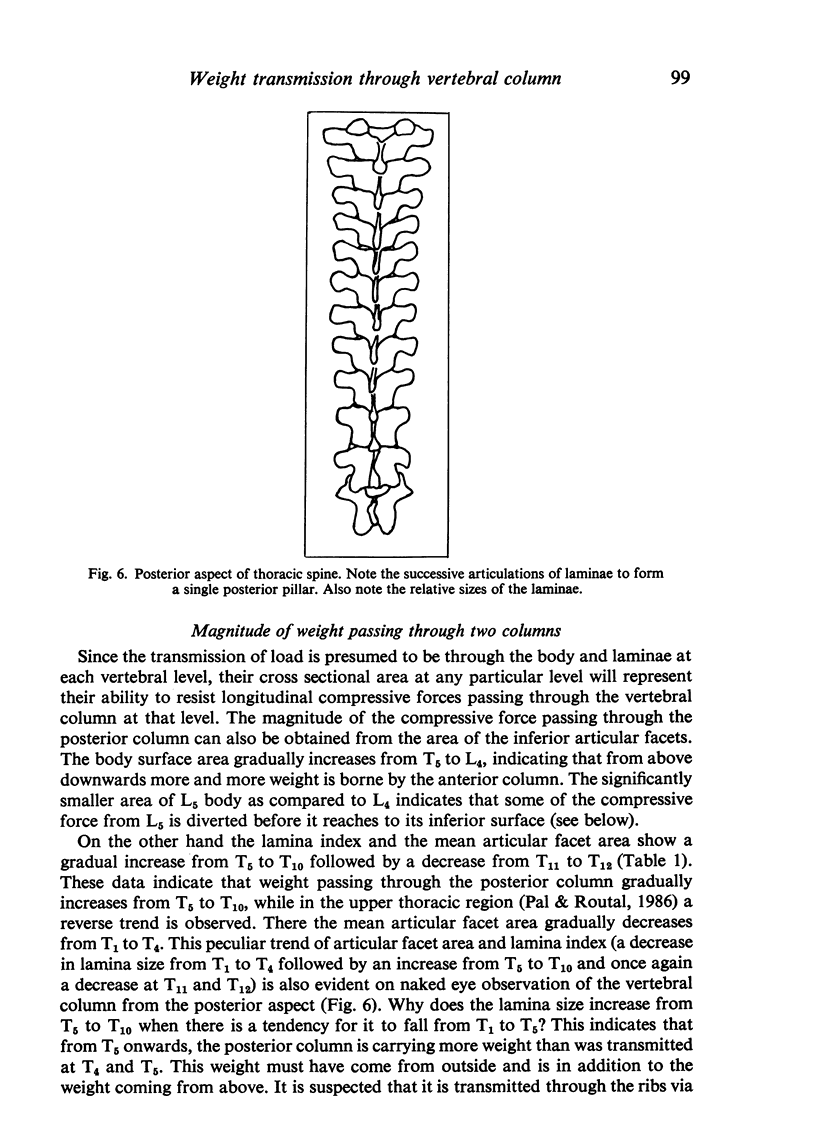
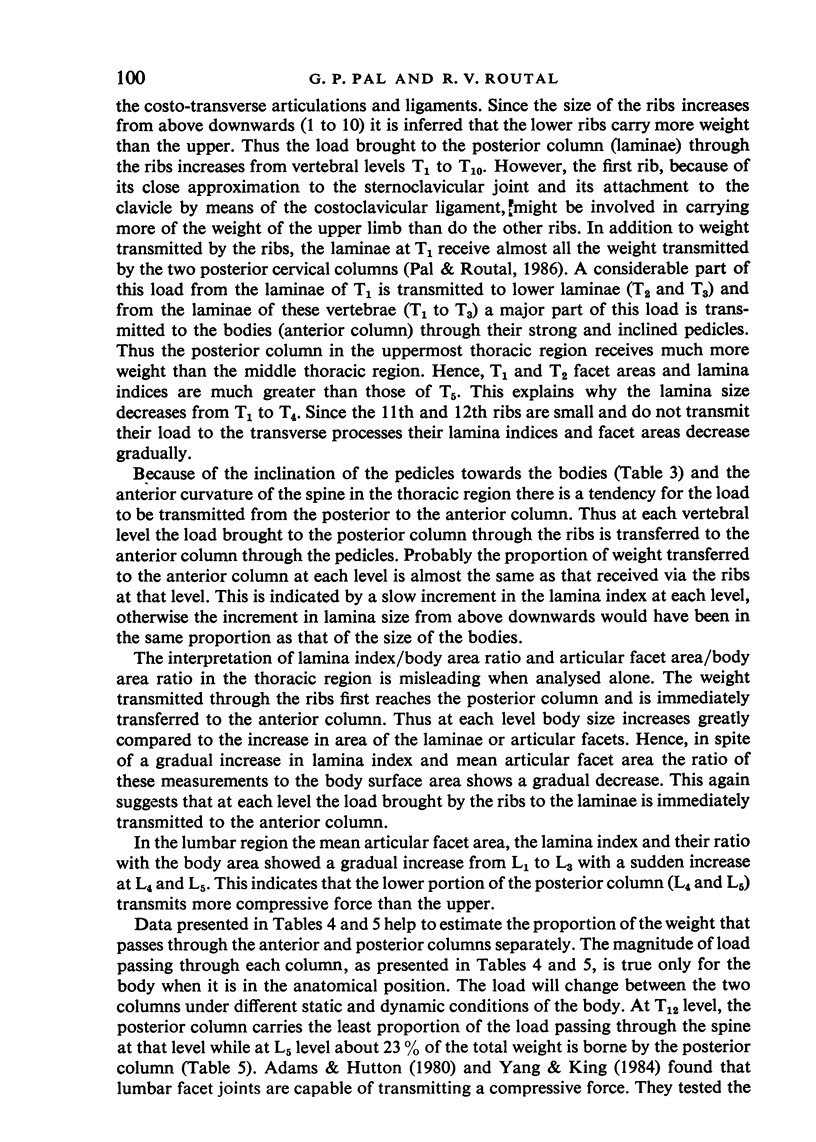
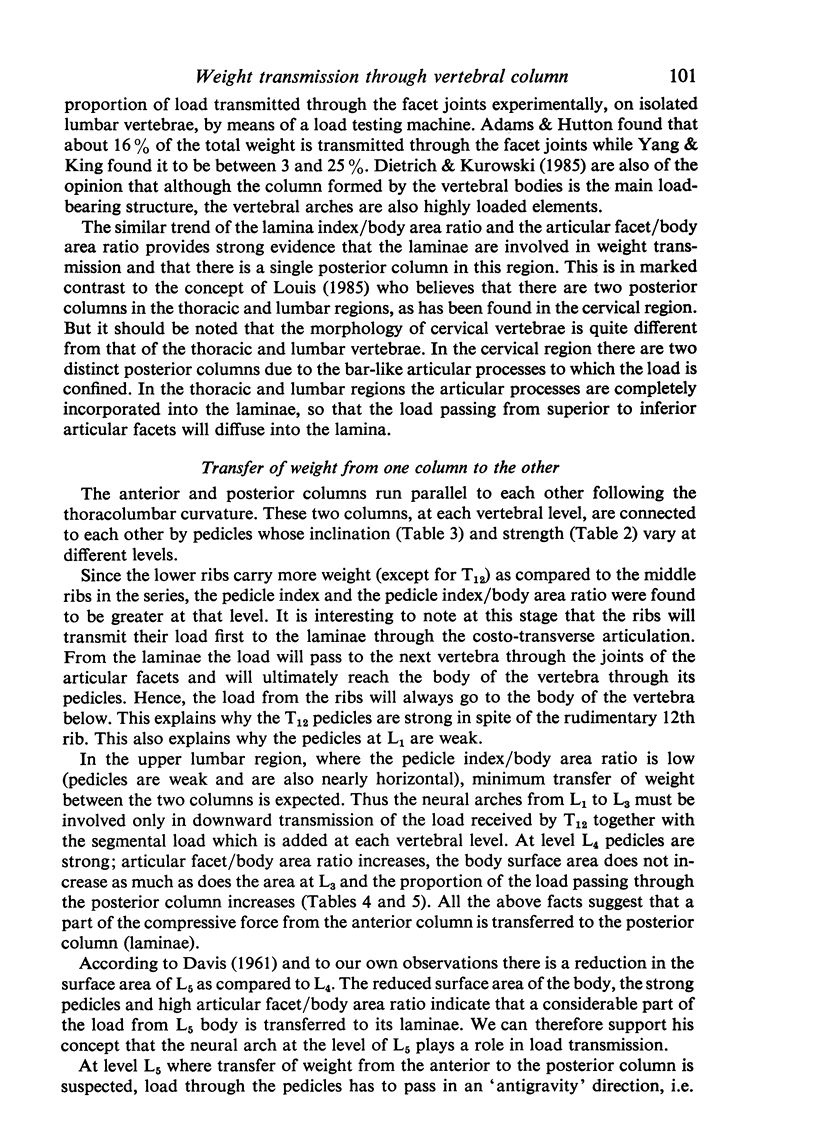
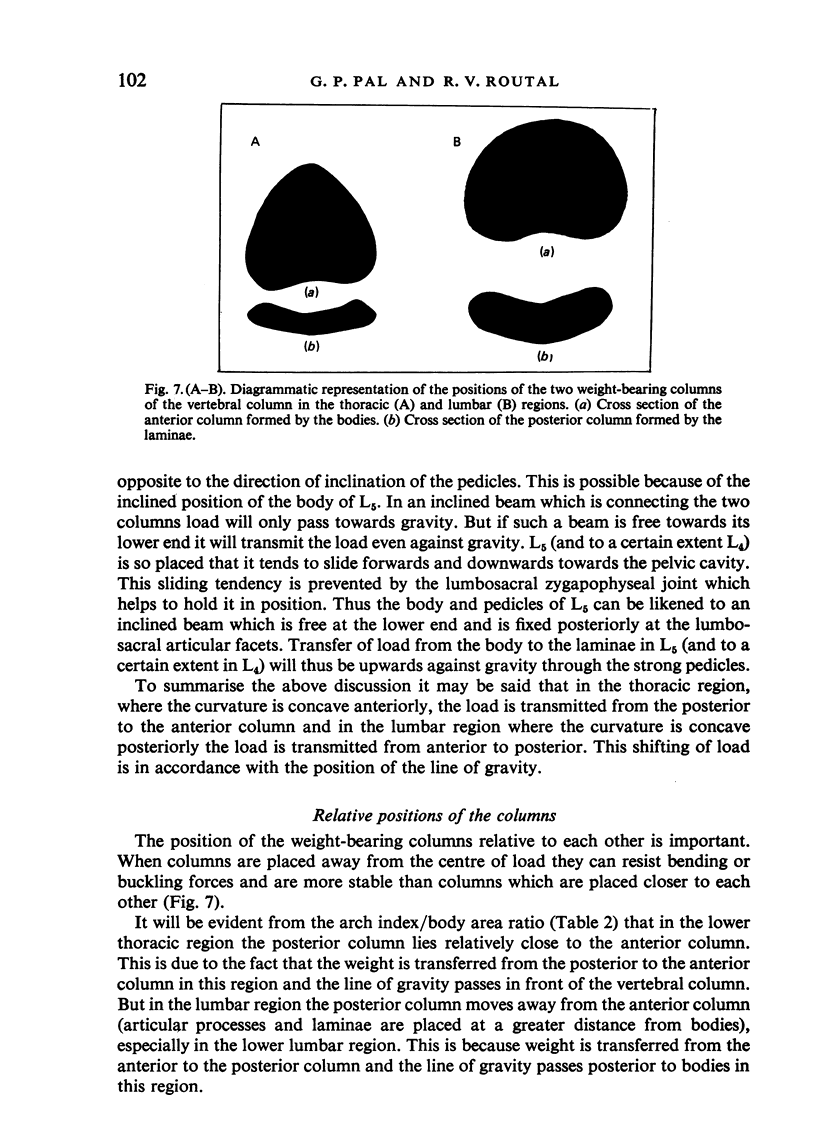
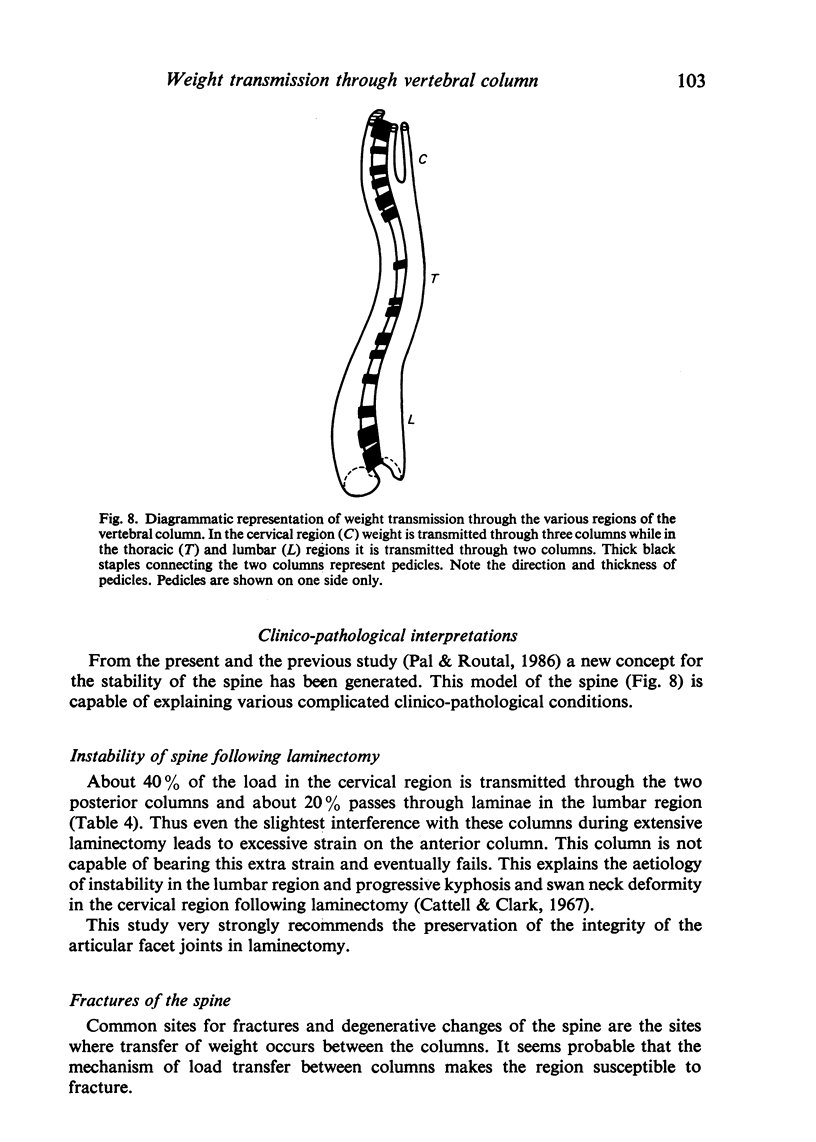
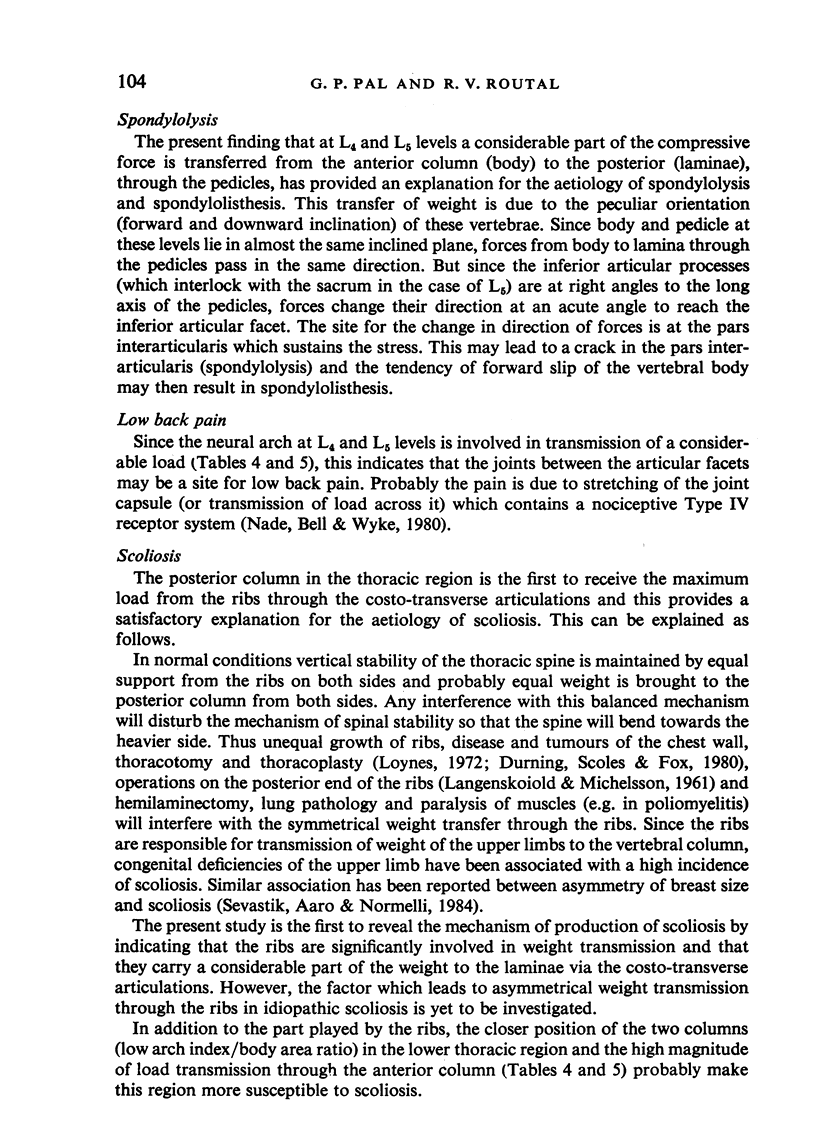
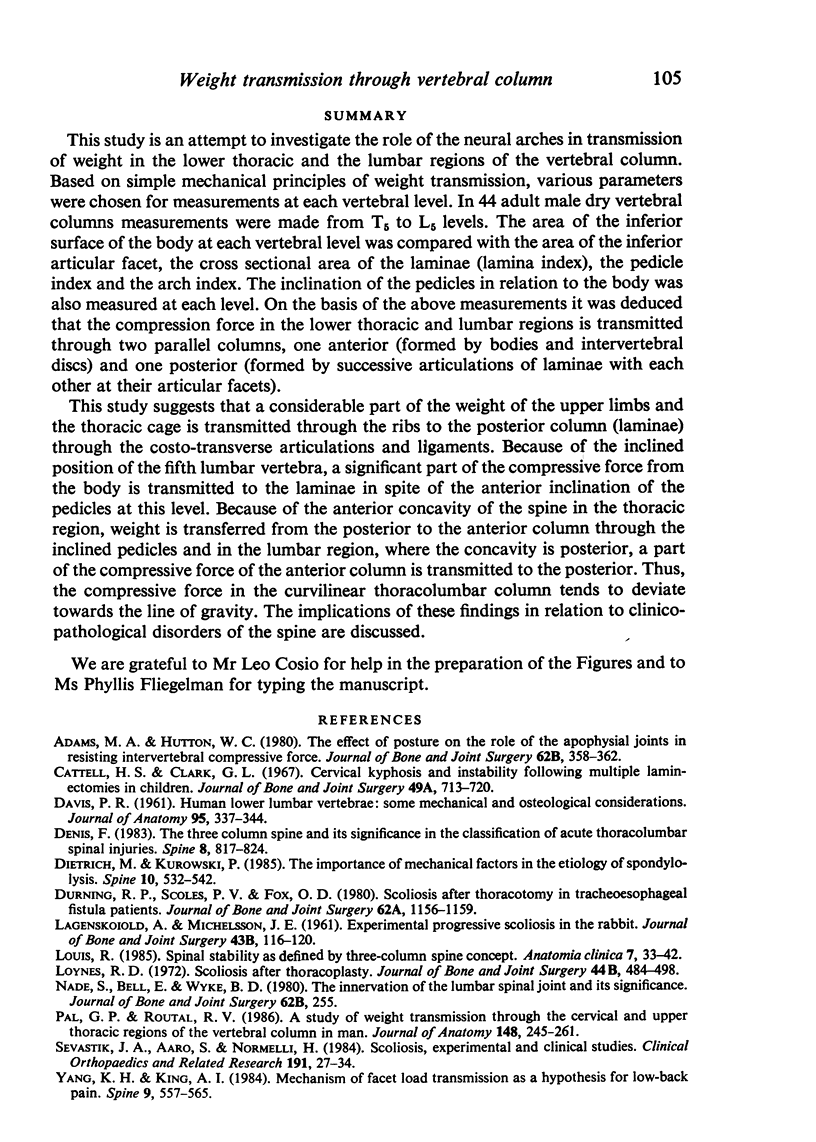
Selected References
These references are in PubMed. This may not be the complete list of references from this article.
- Adams M. A., Hutton W. C. The effect of posture on the role of the apophysial joints in resisting intervertebral compressive forces. J Bone Joint Surg Br. 1980 Aug;62(3):358–362. doi: 10.1302/0301-620X.62B3.6447702. [DOI] [PubMed] [Google Scholar]
- Cattell H. S., Clark G. L., Jr Cervical kyphosis and instability following multiple laminectomies in children. J Bone Joint Surg Am. 1967 Jun;49(4):713–720. [PubMed] [Google Scholar]
- Davis P. R. Human lower lumbar vertebrae: Some mechanical and osteological considerations. J Anat. 1961 Jul;95(Pt 3):337–344. [PMC free article] [PubMed] [Google Scholar]
- Denis F. The three column spine and its significance in the classification of acute thoracolumbar spinal injuries. Spine (Phila Pa 1976) 1983 Nov-Dec;8(8):817–831. doi: 10.1097/00007632-198311000-00003. [DOI] [PubMed] [Google Scholar]
- Dietrich M., Kurowski P. The importance of mechanical factors in the etiology of spondylolysis. A model analysis of loads and stresses in human lumbar spine. Spine (Phila Pa 1976) 1985 Jul-Aug;10(6):532–542. doi: 10.1097/00007632-198507000-00007. [DOI] [PubMed] [Google Scholar]
- Durning R. P., Scoles P. V., Fox O. D. Scoliosis after thoracotomy in tracheoesophageal fistula patients. A follow-up study. J Bone Joint Surg Am. 1980 Oct;62(7):1156–1159. [PubMed] [Google Scholar]
- LANGENSKIOLD, MICHELSSON J. E. A. Experimental progressive scoliosis in the rabbit. J Bone Joint Surg Br. 1961 Feb;43-B:116–120. doi: 10.1302/0301-620X.43B1.116. [DOI] [PubMed] [Google Scholar]
- Loynes R. D. Scoliosis after thoracoplasty. J Bone Joint Surg Br. 1972 Aug;54(3):484–498. [PubMed] [Google Scholar]
- Pal G. P., Routal R. V. A study of weight transmission through the cervical and upper thoracic regions of the vertebral column in man. J Anat. 1986 Oct;148:245–261. [PMC free article] [PubMed] [Google Scholar]
- Sevastik J. A., Aaro S., Normelli H. Scoliosis. Experimental and clinical studies. Clin Orthop Relat Res. 1984 Dec;(191):27–34. [PubMed] [Google Scholar]
- Yang K. H., King A. I. Mechanism of facet load transmission as a hypothesis for low-back pain. Spine (Phila Pa 1976) 1984 Sep;9(6):557–565. doi: 10.1097/00007632-198409000-00005. [DOI] [PubMed] [Google Scholar]


